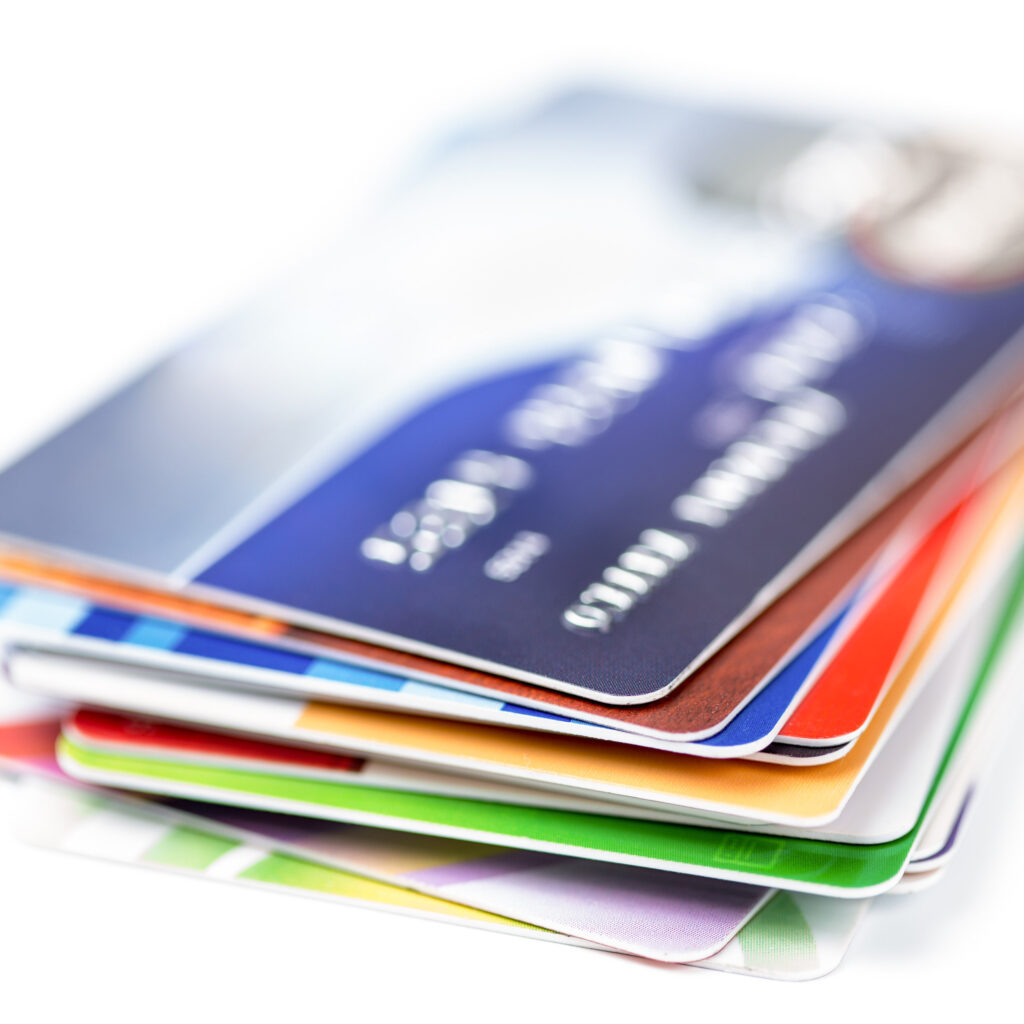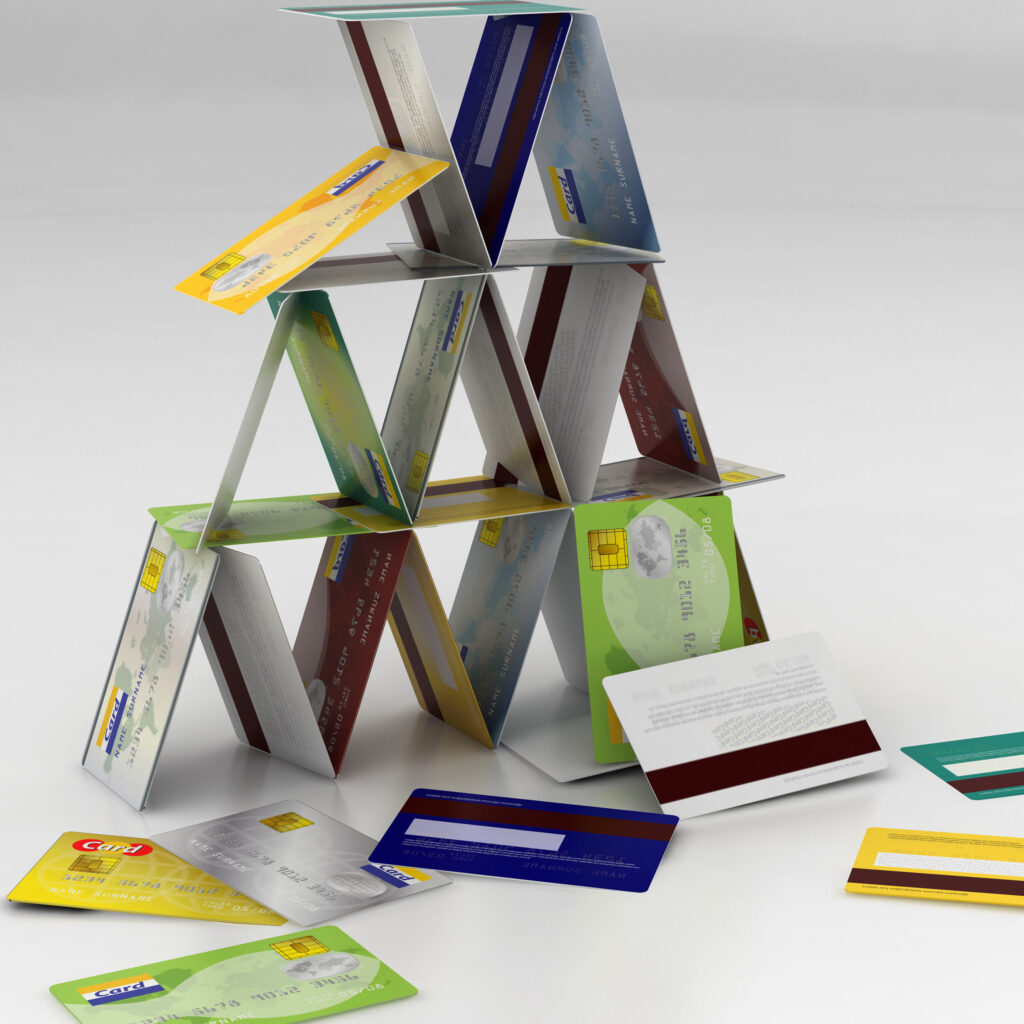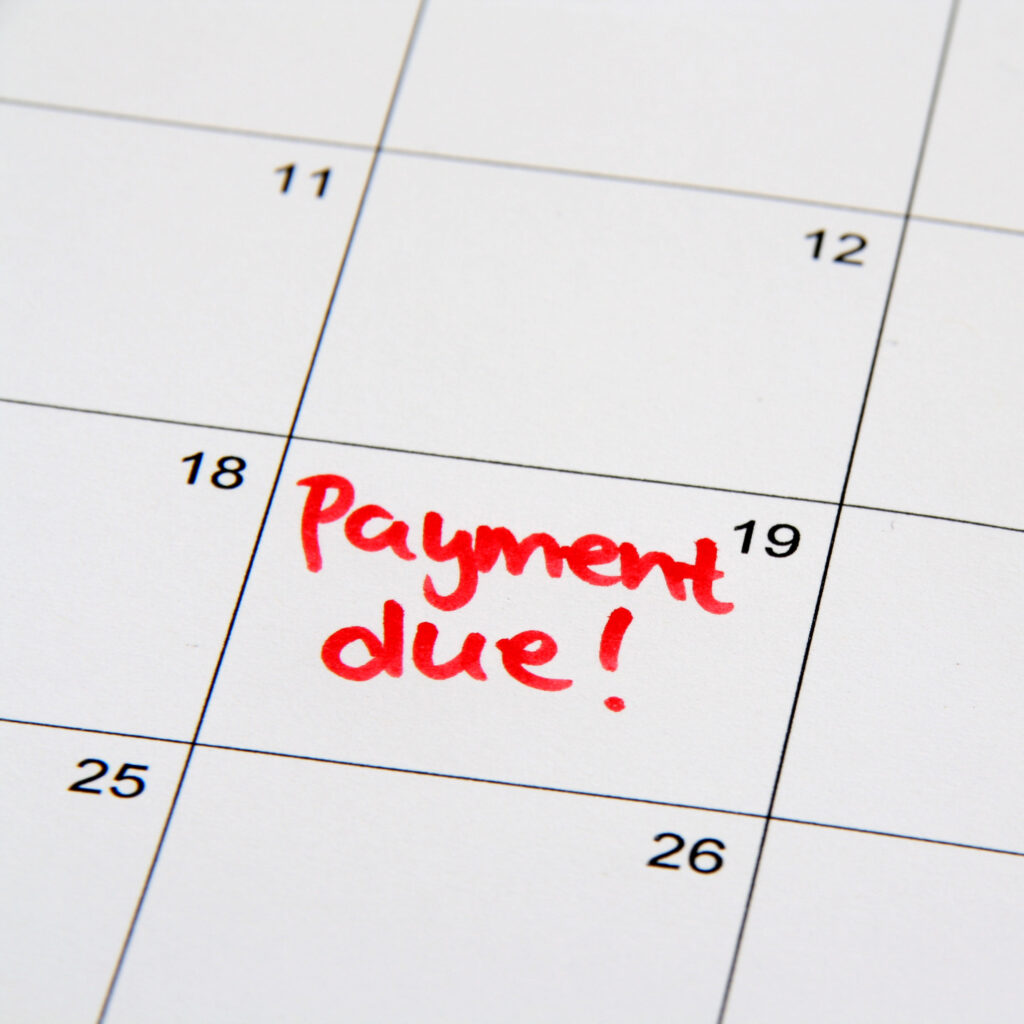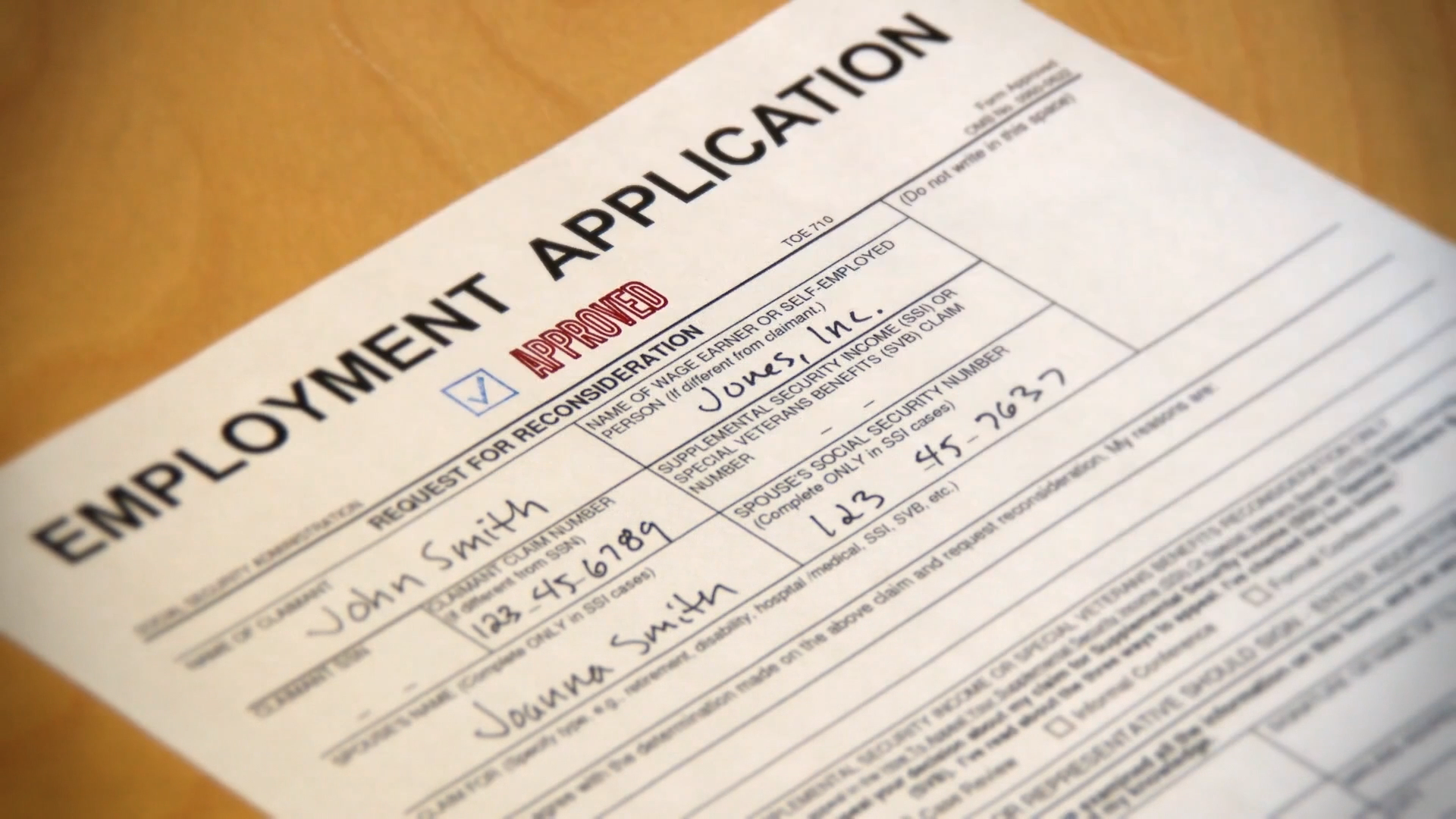CREDIT, DEBIT AND ATM CARDS

THE ERA OF CASHLESS PURCHASES
Back in the good old days (before 2003), most people used cash to pay for the things they bought. But for more than a decade, credit and debit cards have surpassed cash as the purchasing methods of choice.
If you received gift cards, or use a debit card with your checking account, then you’ve already begun making cashless transactions. But you’ll have to wait until you turn 18 to apply for a credit card. And until you turn 21, you’ll need an adult co-signer who promises to be responsible for any debt you don’t pay. Still, many high school seniors already have credit cards, and if you’re not one of them it’s a good bet there is one in your future. So the sooner you understand the basics of cashless purchases, the better equipped you are to make informed decisions not only on what you buy, but how you buy it.



CREDIT CARDS 101
KNOW WHAT YOU OWE
When you pay for a purchase with a credit card you are actually borrowing money from the card issuer – whether it be a bank, credit union, department store, gas company, etc. Their money is paying for your purchase, and you must pay them back. You will be sent a bill listing the total amount you owe, plus the minimum payment you may make. If you pay in full and on time, you will owe your card issuer nothing else. But, if you pay only part of your total (even if it’s more than the minimum amount), then like all loans, you will be charged interest each month for the amount that you still owe.


CREDIT COMES AT A PRICE
MINIMUM PAYMENT = FINANCE CHARGE
Let’s face it – credit card issuers aren’t doing this just to be nice. They make a profit on their services. That’s because the majority of Americans carry a balance on their accounts for months or years. And that adds up to whopping amounts of finance charges paid to their card issuers.
The minimum monthly payment is the amount of money you must pay in order to keep your credit card active. It is a small percentage of your entire balance. And you need to know that once that small payment is subtracted from your balance, you will be accumulating finance charges on the remaining amount you owe. In other words, if you make an on-time minimum payment every single month, you will end up having paid much more than the amount you originally spent. For example:
You owe $300. Your card issuer charges 17% interest, and requires a 2% minimum monthly payment. If you never charge another item on that account, and faithfully make minimum payments every month, it will still take you 40 months to pay off your bill in full, and you will have paid an extra $93 in interest. In other words, if you charged a tablet in your freshman year, you’d be paying for it until you were a second semester senior!
How much can cashless purchases end up costing you? Use our credit calculator in the Know More section and see for yourself.
PAYING YOUR BILL
LATE? NOT GREAT!
When you get your credit card bill, you usually have about 25 days to pay it. This is called your grace period. If you pay your bill in full within this time, you won’t have to pay any finance charges.
Is your payment late? Or worse – did you miss making a payment? Expect to be charged a penalty – twice! You’ll be charged a late fee (up to $35), plus a penalty interest rate hike that can send your interest soaring to almost 30%…or higher, according to an article in US News.com.
Thanks to the Credit Card Act of 2009, the rate increase can’t be applied to existing balances (unless your payment is late by 60 days or more.) You must be notified of the new rate 45 days days before it goes into effect. But unfortunately, the law does not place a cap on interest rates, so the greater a risk you appear to be to your creditors, the higher the rate they’ll charge you. Bottom line: pay on time, every time. It’s the best thing you can do for your credit rating and your wallet.





CREATING YOUR CREDIT HISTORY
YOU’RE NOT JUST CHARGING, YOU’RE BEING SCORED
Every bill you pay – not just credit cards, but cell phones, rent, whatever — becomes part of your credit history, and impacts how easily you can borrow money in the future. A solid credit history will enable you to get auto and home mortgage loans at a good rate. Credit reporting companies carefully track your payment patterns and provide that information to credit card companies, banks, and even employers.
In addition to credit reports, you will be given a credit score (also called a FICO score) that reflects:
- Payment history
- How much you owe
- The length of your payment history
- What kinds of credit you use
- New credit applications
Scores range from 350 to 850, and the higher your score, the better a prospect you are for credit and loans. Late payments will drop your FICO score, but establishing and maintaining good payment patterns will raise it.
GOLDEN RULES OF GOOD CREDIT
3 THINGS TO REMEMBER
It takes practice to become a good money manager. But you can be well on your way to being a credit card champ, if you avoid the three most common mistakes that teens (and adults) make:
- Consider before your charge. A credit card is not free money – it’s a loan that you are ultimately making to yourself. Don’t buy on credit unless you know you can pay for your purchase soon. And don’t open too many credit cards – try to keep it to three, max.
- Pay on time every time. Disorganization is way too expensive – it can result in hefty penalty fees and damage to your credit rating. Always know when your bills are due, and always pay within the grace period.
- Pay more than the minimum. Paying your bill in full is the most cost-effective way to use your credit card. But if that’s not possible, paying extra each month will help you pay off your debt faster, and ultimately save you a lot of money.

CREDIT CARD PROS AND CONS
THE ADVANTAGES AND DISADVANTAGES OF USING CREDIT
Advantages
- Convenience – no need to keep lots of cash with you.
- Buy Now – you are able to pay for purchases at any time, even if you don’t have the cash on hand.
- Use Anywhere – online, in stores, restaurants.
- Purchase Protection – most card issuers offer safeguards against identity theft and product disputes.
- Build Credit – responsible use of credit cards helps establish a good credit history. Good for emergencies and unforeseen contingencies.
Disadvantages
- Blowing the Budget – it’s way too easy to spend beyond your ability to repay.
- Interest Charges – items you buy automatically become more expensive if you add finance and late payment fees.
- Too Much Debt – using more than one card, or charging too often, can quickly create balances you can’t handle; and as your balances grow so will your minimum monthly payments.
- Extra Fees – cash advances, transfers, and yearly card renewals mean additional costs.
- Losing Track – if you don’t save receipts and check account activity religiously you can lose sight (and control) of your financial situation.
ATM AND DEBIT CARDS 101
USING YOUR OWN, NOT A LOAN
Unlike a credit card, which is like a loan, there are cards which enable you to use your own money for transactions. These include ATM, debit and prepaid cards.
ATM Cards
When you open your checking account, you’ll probably also get an ATM (Automated Teller Machine) card, which gives you direct access to the money in your account. You can withdraw cash or make deposits anytime (and practically anywhere), without ever having to enter a bank. If you’ve ever walked down a street or gone to a mall you don’t need to be reminded of how many ATMs are around. Each of them is owned by a specific bank. And though you can use any ATM you like, if it doesn’t belong your bank, you will be charged a fee. As you might have discovered, those can add up pretty fast.
Another thing that can add up fast – the amount of cash you take out of your account. Be sure to note down every withdrawal you make, or you’ll find yourself overdrawn, and racking up some hefty penalty fees.
Debit Cards
It looks like a credit card. It’s convenient like a credit card. You can use it to buy stuff like a credit card. But a debit card has a major difference: rather than postponing payment until a future time, the debit card immediately removes the money for your purchase from your checking account and transfers it to the store’s account. This makes it even more important to record every purchase and cash withdrawal, and deduct it from your account balance, so you know at all times how much is left in your account.
Bottom line: keep a firm grip on your receipts. Get into the ‘subtract-as-you-shop’ habit, so you always know your remaining balance. And don’t use a debit card unless you’re positive you have the funds in your account to cover. The store’s processor will discover immediately if you don’t have enough. Besides being embarrassed, you may be charged penalties by your bank.
Prepaid Gift Cards
These stored-value debit cards aren’t linked to a checking account. Instead, they are ‘pre-loaded’ or prepaid with a certain amount of money. You can use a gift card pretty much like a debit card, making purchases and cash withdrawals online, in stores, at ATMs, until you’ve used up your balance. Then you can either dispose of the card, or reload it, often online or by phone. Account activity can be tracked online, and these cards can be a safe and easy way to begin building your budgeting biceps and money management muscles. If you’re thinking of buying prepaid cards as gifts (or for yourself, as a safe, convenient alternative to cash), be sure to shop around for a card that charges no fees (or very small ones).




KNOW MORE
The more you know, the farther you will go! Continue the learning with these resources:
What is a Credit Report:
www.consumerfinance.gov
Where to order copies of your credit reports:
www.ftc.gov
www.experian.com
www.equifax.com
www.transunion.com
How to get the most from your credit card:
www.federalreserve.gov/publications/default.htm
Credit card rules for teens:
www.thomas.loc.gov
